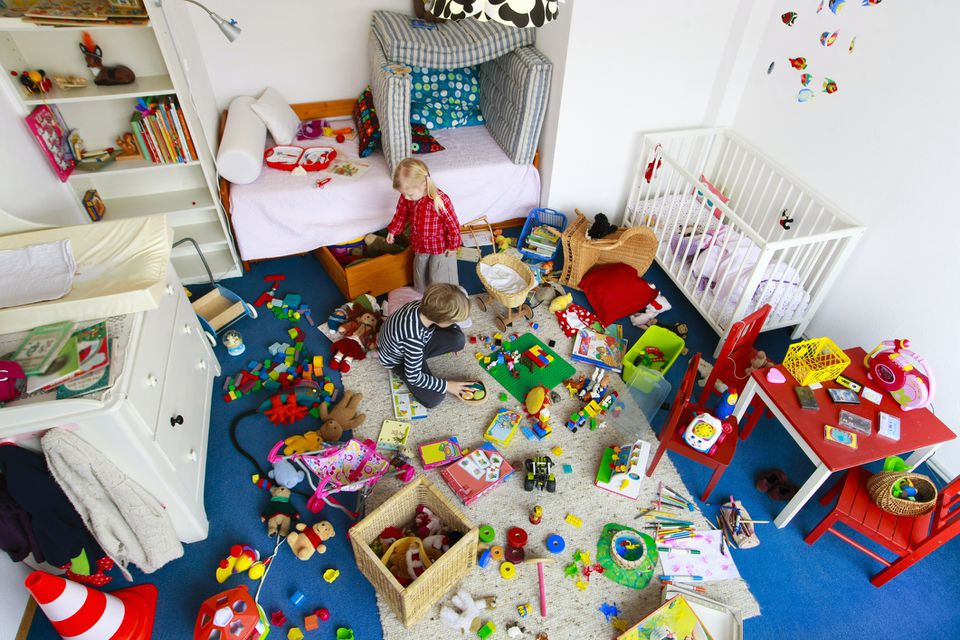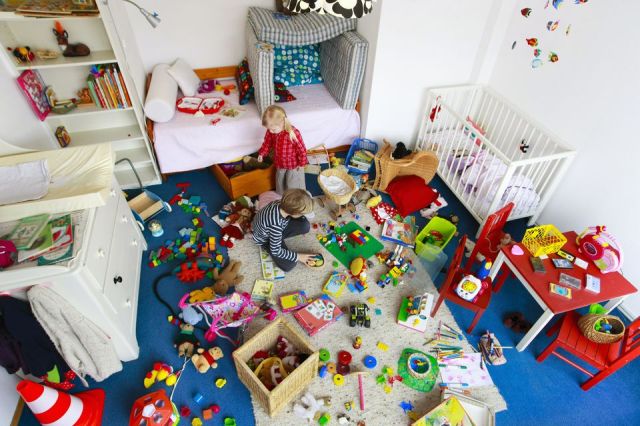
Your little human loves to learn and play, but this can lead to a big mess very quickly. And, unfortunately, it’s often not in their nature to pick up after themselves. Trying to keep everything neat, clean or tidy in a house with kids can sometimes feel like you are fighting a losing battle and can be the last thing you want to do after a long day. Follow these tips to make tidying up fun so your child is encouraged to help out around the house—no matter their age.
1. Give rewards and incentives. Whether your kids are 3 or 13 they will always love—and, more importantly, respond to—a treat or reward for a task. One way to get them to help pack away their toys or help with chores around the house is to give them a reward once the task is done. This could be as simple as extra playtime, an extra bedtime story or a small snack after dinner. Or, for older children it’s the chance for them to earn some pocket money—and for you to check some things off your to-do list!
2. Make it fun. No one wants to do chores. It’s probably not your favourite thing to do, and your little ones will likely feel the same. However, jobs like putting the dishes away, tidying items when you’re done with it, and vacuuming regularly are a part of life and have to be done.
Make a tedious task fun by putting on upbeat music and get them to dance along while putting stuff away. Or, why not put a time limit on the job to make it a race? This will bring out their competitive side, and you’ll get the job done faster. In fact, making cleaning fun can have significant benefits on mental health, as a new study by RAJA showed, 27% of people found decluttering to be mentally satisfying and 16% stated it was rewarding. Just another benefit of a job well done.
3. Choose your words wisely. One sure-fire way to get a ‘no’ from your kids when you need them to do their tasks is to ask them to do it. Asking them suggests that they have a choice in completing the task. Instead, deliver your request in the form of a statement: ‘It’s now time to clean your things away, please.” This way, if your child says no, you can explain that it wasn’t a question, it is an instruction and a job that needs to be completed. Not giving them the opportunity to question you immediately gets them in the mind frame that this is a job that needs to be done in a timely manner.
4. Make it clear where items belong. Not knowing where pens, trains, books or games should go can slow your kids down when they’re putting them away. Utilize the space you have and dedicate storage space for the different types of items your children use daily. This could mean floor-level storage boxes for younger kids or shelves and drawers for older ones. For younger children, help them out by putting pictures of the items or labels of the toys on the storage box. This way, they won’t need to ask you where things go and helps to teach your kids to take responsibility for their things.
5. Seize the opportunity when they ask to help. Every child is different and the number of times they ask to help may be few and far between. But, if they do offer to help—whether it’s with the cooking or doing the dishes—seize it with both hands! For younger children, guide them through age-appropriate tasks where you can. If you make it a fun and positive experience you may find yourself with little hands willing to help you more often.











